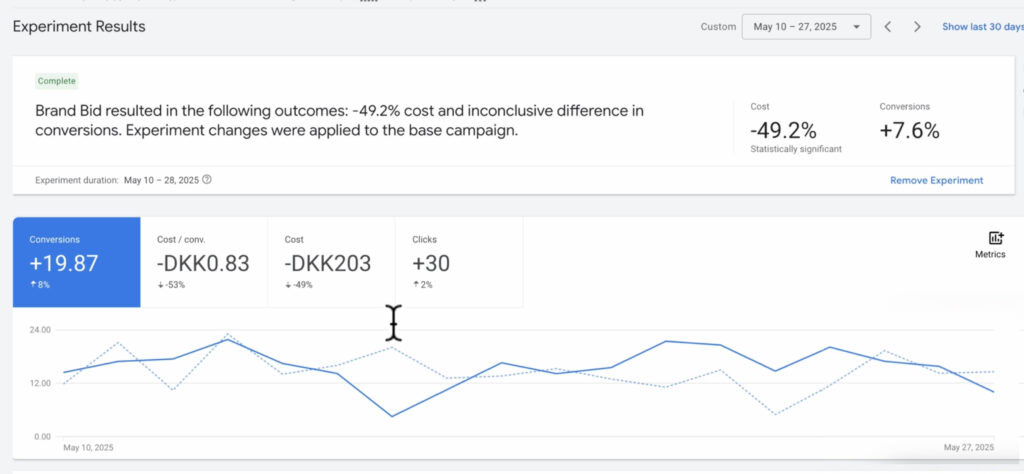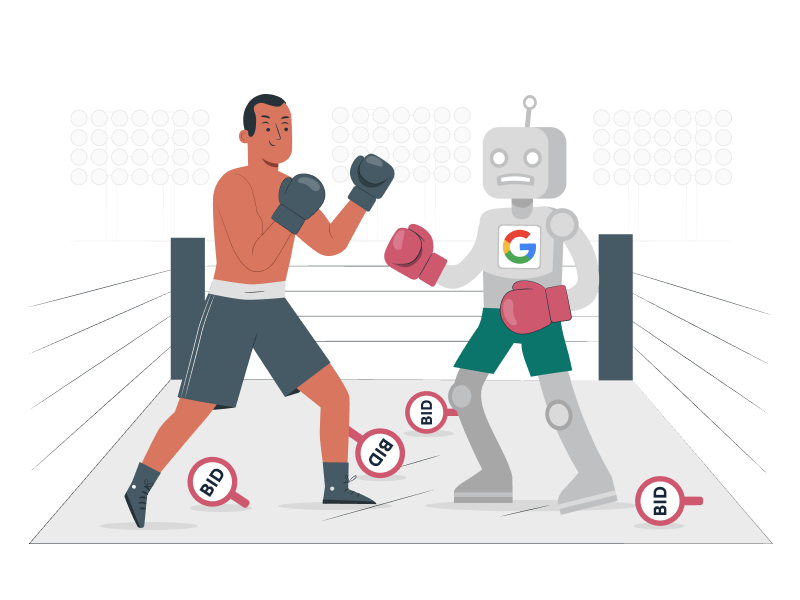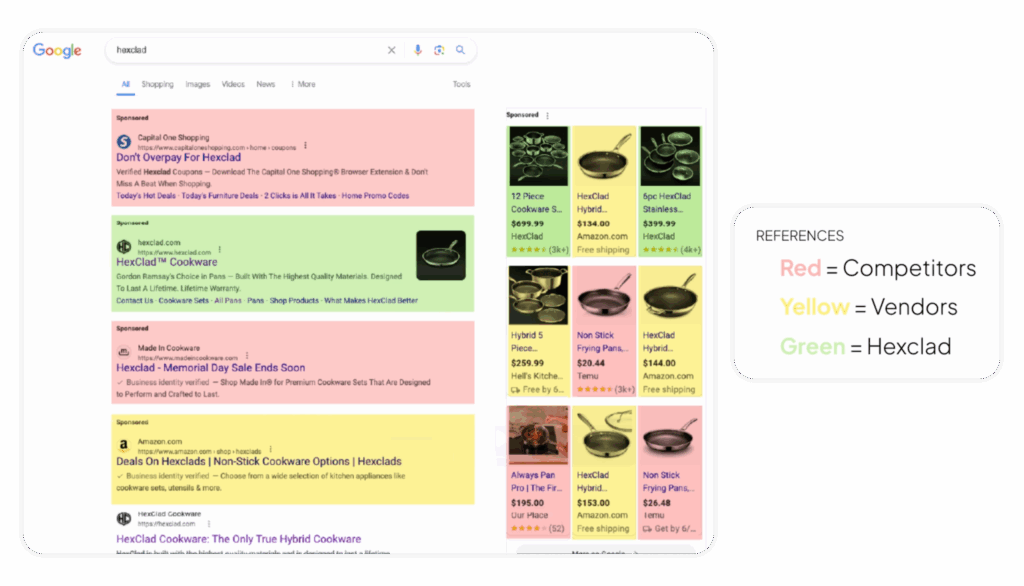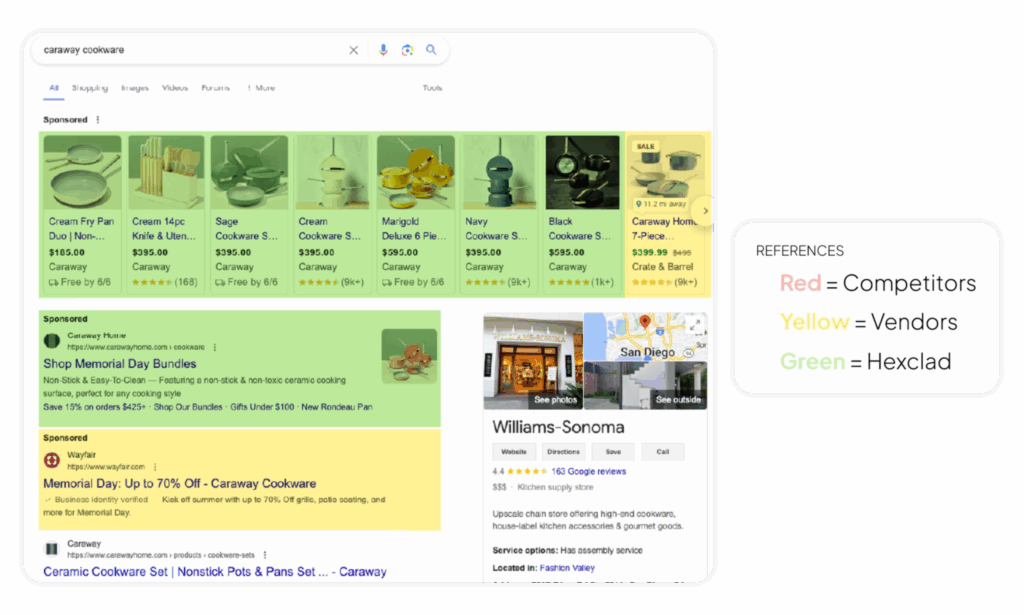Brand bidding in Google Ads is one of those topics where nobody seems to agree. About a year ago, I got tired of the dogma. I was tired of people telling me I was “religious” about my brand bidding framework, followed by the usual absolutist claims that it’s always good or always a waste of money.
So, I went deep. I decided to map out every factor I could think of: When should you do it? When should you not? How should you bid? I wanted to create a definitive framework that shows why this is a much more nuanced and important topic than most “experts” give it credit for. Let’s jump in.
Go Beyond the Article
Why the Video is Better:
- See real examples from actual client accounts
- Get deeper insights that can’t fit in written format
- Learn advanced strategies for complex situations
Why Nobody Agrees on Brand Bidding
The core of the disagreement is simple: people talk about “brand bidding” as if it’s one thing. It’s not. The right strategy is completely dependent on your specific business context. An approach that’s brilliant for one company can be a complete disaster for another.
Here are just a few scenarios that completely change the brand bidding equation:
- You’re a Wholesale/DTC Hybrid: If you’re a brand like Nike, where maybe 80-90% of your revenue comes from wholesale, your brand name isn’t a bottom-funnel keyword. It’s mid-funnel, at best. People searching “Nike shoes” are looking for a place to buy, not necessarily your website.
- You Have No Competition: If nobody else is bidding on your brand term, there is very little value in bidding yourself. You might want to run a tiny campaign just to collect data and get an alert if a competitor shows up, but spending thousands of dollars here is just lighting money on fire.
- You Have a Ton of Competition: If competitors, affiliates, and retailers are all over your brand search results, you probably need to be there. But the goal isn’t just to show up; it’s to find the right bid. A smart bidding strategy here can decrease your costs by 50-80% compared to just blindly setting Target Impression Share.
- Your Brand Name is Generic: If your brand is something like “PrintOnDemand.com,” you have a serious challenge. Bidding on that term is going to be tough and expensive because you’re competing with the generic meaning of the phrase.
This is precisely why nobody agrees. The keyword’s intent can be top, middle, or bottom-funnel. Your competitive landscape can be empty or a warzone. The answer is always, “it depends.”
Even the SERPs Aren’t the Same
My personal opinion? Google shouldn’t allow ads on branded terms. It’s basically a tax on businesses—another percentage that goes straight into Google’s pockets. The ideal search result page (SERP) is just your organic listing, sitting at the top.
But that’s not the world we live in. Instead, we get competitors, affiliates, and our own retailers bidding against us. Look at this example from HexClad. The SERP is packed with competition. For them, being present in the auction is likely critical to protect their traffic.
Now, look at Caraway. They’re in almost the exact same business as HexClad, but their brand SERP has virtually no competition. These are two similar DTC brands, yet their brand bidding needs are polar opposites. This is the nuance everyone misses.
The Only Question That Matters: Is It Incremental?
Instead of asking, “Should I bid on my brand?” the much better question is, “Is my brand bidding incremental?” In other words, would this conversion have happened anyway?
How to Actually Test for Incrementality
The only real way to answer this question is with a holdout test. You split your campaigns by geography, bid on your brand term in one group, and don’t bid in the other. Then you look at your total backend conversions (not just Google Ads conversions) for each group. If the group where you bid on brand shows a significant lift in total sales, then your ads are incremental. If there’s no difference, they’re not.
The problem is, most businesses don’t have enough search volume to run a clean geo-test. That’s why I’m excited about the incrementality study testing that’s supposed to be coming to Google Ads soon. (I’ll do a video on it when it’s out).
The second-best way? Just turn it off and see what happens. Run a simple on/off test: one week on, one week off. Repeat it a few times. This isn’t perfect, but it will give you a directional sense of the impact. Remember, if you have no competitors, I can almost guarantee you won’t see any difference.
A Note on New vs. Existing Customers (It’s a Distraction)
A lot of people get sidetracked here. They look at a brand campaign and say, “Hey, 60% of these conversions are new customers! This is a valuable part of our acquisition funnel!”
This is flawed logic. We are not trying to find out if brand searches lead to new or existing customers. That’s irrelevant. We’re trying to find out if the ad itself caused a conversion that wouldn’t have happened otherwise. Whether the user is new or returning has zero bearing on that question.
How to Bid on Brand: Manual CPC vs. Smart Bidding
Okay, let’s say you’ve determined that bidding on your brand is, in fact, incremental. Now, how should you bid?
When Smart Bidding is Great (and Why It Fails on Brand)
Smart Bidding is excellent under specific conditions:
- There are a lot of competitors.
- Conversion rates vary wildly across search terms, devices, and audiences.
- You have thousands of keywords or products to manage.
However, for a typical brand search campaign, the exact opposite is true:
- You have very few (if any) competitors.
- Conversion rates are incredibly stable.
- You have maybe 5-20 keywords to keep track of, tops.
There just isn’t a big data problem for Smart Bidding to solve here. This is a scenario where the algorithms don’t have a significant edge, and manual bidding is often the better choice. The one exception can be Shopping, where you might have thousands of product SKUs and compete with many wholesalers, giving Smart Bidding more variables to optimize for.
Four Practical Tactics for Smarter Brand Bidding
If you’re going to bid on your brand, do it right. Here are four tactics we use to avoid waste.
1. For Goodness Sake, Use Experiments
Way too few people use the Experiments feature in Google Ads, especially for brand campaigns. Instead, they just lower their bids and then get confused by seasonality. They see clicks go up or down and can’t tell if it was the bid change or a promotion. Then the client gets nervous and says, “Maybe our competitors overtook us!” and they crank the CPCs back up.
I actually ran an accidental experiment recently. I was filming a tutorial, decreased bids in an experiment by 50%, and then forgot I set it live. The result? We cut our cost in half with zero impact on traffic, revenue, or impressions. Experiments give you clean, statistically significant data. Use them.

2. Abolish Affiliates & Make a Gentleman’s Agreement
You should have an iron-clad rule: no affiliates are allowed to bid on your brand terms. Period. Check for this routinely.
You can also try reaching out to your competitors, especially owner-to-owner. This works better in Europe than in the US, but a simple gentleman’s agreement (“I won’t bid on your brand if you don’t bid on mine”) can work wonders if brand traffic isn’t a huge part of their strategy.
3. Nail Your Campaign Structure
This should be obvious, but I still see it done wrong. Your brand keywords must be isolated in their own campaign. And you must exclude your brand terms from every other campaign you’re running, especially Dynamic Search Ads and Performance Max.
4. Separate Your ROAS Reporting (I Will Die on This Hill)
I will die on this hill: you should never, ever combine reporting for brand and non-brand traffic. It’s just like retargeting. Your brand search campaign cannot take 100% credit for a conversion that was likely created by a Meta ad, a TV spot, or simple word-of-mouth.
The Google Ads manager shouldn’t take credit for brand revenue going up, because they have no impact on it. And if they take the credit on the way up, they have to take the blame when it goes down. As an agency, you don’t want to be in that position. Isolate brand performance so you can focus on the real value you’re driving.
Should I Include Brand Terms in PMAX?
I get this question all the time. My answer is almost always a resounding no.
- New Brand? I don’t really care. You don’t have many brand searches, so it won’t make a big difference. But I would still exclude it out of principle.
- Meta-Heavy Brand Moving to Google? For the love of God, exclude it. The reason 90% of DTC brands fail to get Google Ads to work is that they let PMAX cannibalize all the brand demand they created on Meta. They see a high ROAS in Google Ads, but their total marketing efficiency doesn’t improve because it’s not incremental.
- Existing Brand? Exclude. It’s highly likely PMAX will overspend on your brand terms, stealing credit and making your performance look better than it actually is.
So, should you do brand bidding? Probably, yes. But you should also probably spend a lot less than you are today. Test it, be smart about it, and stop treating it like a religion.
[TL;DR]
- There is no “one-size-fits-all” rule for brand bidding. The right strategy depends entirely on your business model, brand name uniqueness, and competitive landscape.
- The most important question isn’t “should I bid?” but “is it incremental?” Use holdout tests or on/off cycles to see if brand ads actually drive more total sales.
- Manual bidding is often superior to Smart Bidding for brand campaigns because they typically have few keywords, stable conversion rates, and low competition—the opposite of where Smart Bidding excels.
- Always isolate brand keywords in their own campaign, exclude them everywhere else (especially PMAX), and never, ever combine brand and non-brand ROAS in your reporting.









